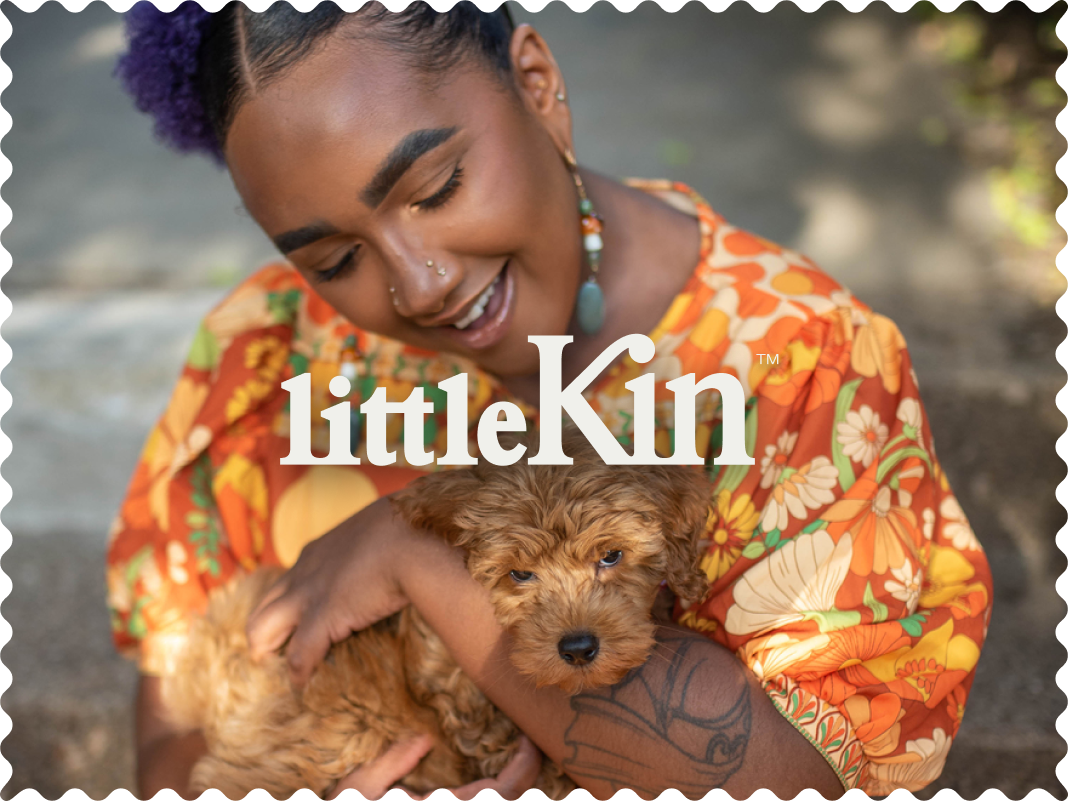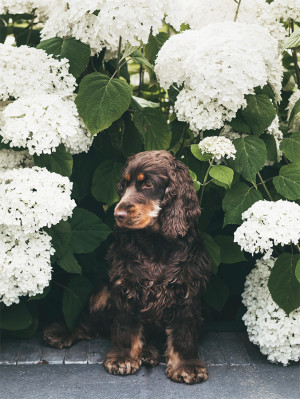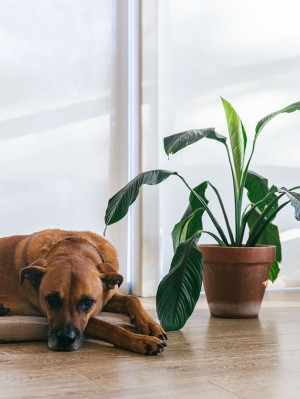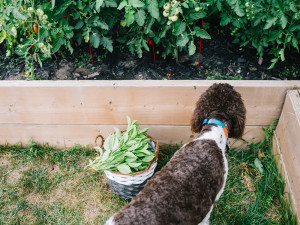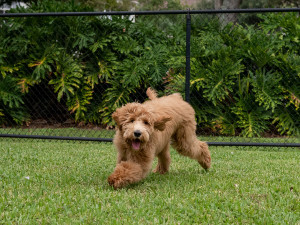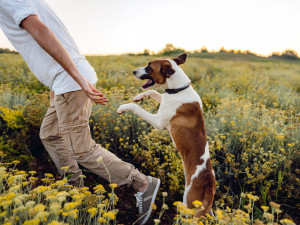This Beautiful Garden Flower Could Kill Your Dog
Foxgloves are extremely toxic to pets. Here’s what to know
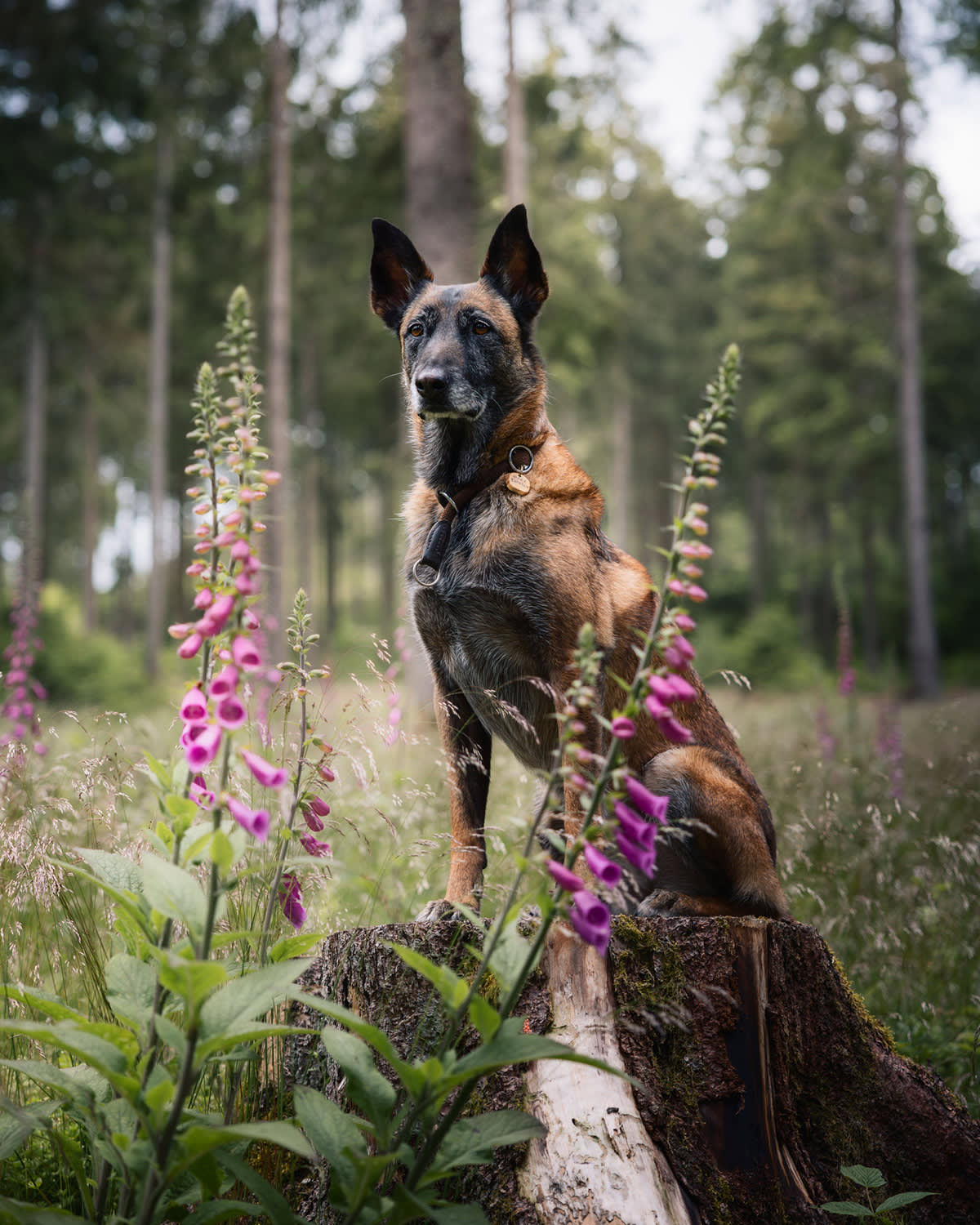
Share Article
In this article:
How to identify a foxglove Are foxgloves poisonous to dogs? Why foxgloves are dangerous for dogs How dogs get foxglove poisoning What to do if your dog has eaten foxgloves Symptoms of foxglove poisoning in dogs Foxglove poisoning diagnosis Treating foxglove poisoning How to prevent foxglove poisoning
Every dog parent knows the joy of watching their pet explore the garden – nose to the ground, tail wagging, investigating every interesting scent and texture. But hidden among our most beloved flowering plants lurks a common danger that could threaten your dog’s life in a matter of hours.
The foxglove (Digitalis purpurea) might be a gardener’s dream with its tall, elegant spikes of bell-shaped flowers, but it’s a dog parent’s nightmare. Every single part of this plant – leaves, flowers, stems, and seeds – contains cardiac glycosides, powerful compounds that mess with your dog’s heart rhythm. These are the same chemicals used in human heart medication, but in an uncontrolled dose, they’re deadly.
Here’s what every pet parent needs to know about foxgloves: even small amounts can be life-threatening, and the difference between life and death could come down to how quickly you recognise the signs and act.
What does foxglove look like, and how to identify it?
Foxgloves are hard to miss once you know what to look for. These tall flowering plants can grow between 2–5 feet tall and are native to the UK and Europe. Their most distinguishing feature is the tubular, bell-shaped flowers which grow in vertical clusters and come in various shades of purple, pink, white and yellow. They typically bloom from late spring to midsummer (May to July) depending on the climate.
You’ll find them in gardens everywhere – they’re popular because they’re pretty hardy and can thrive in most soil conditions – but they also grow wild in woodlands, meadows and along roadsides. If you’re unsure whether a plant in your garden is a foxglove, take a photo and compare it with an image online or consult your local garden centre. It’s better to be safe than sorry.
Are foxgloves poisonous to dogs?
The short answer is yes – foxgloves are extremely poisonous to dogs. All parts of the foxglove plant (Digitalis purpurea) are highly toxic, and symptoms can appear quickly over several hours depending on how much your dog has consumed. Even small amounts can be life-threatening.
Key signs to watch out for include:
drooling
nausea or vomiting
diarrhoea
weakness or lethargy
loss of appetite
abnormal heart rate (slow, fast, or irregular)
tremors or seizures
collapse
Every minute counts when foxglove poisoning is suspected, so it’s crucial to act quickly if you think your dog has ingested any part of the plant.
Why foxgloves are dangerous for dogs
Dogs are naturally curious animals, which means they tend to sniff, lick or chew unfamiliar objects – which can lead to accidental poisoning. Foxglove poisoning occurs when a dog ingests any part of the plant.
Foxgloves contain cardiac glycosides – powerful compounds that mess with your dog’s heart rhythm. These are the same chemicals used in human heart medication (such as the drug digoxin), but in an uncontrolled dose, they’re deadly. These substances interfere with normal heart function by altering electrolyte balance and heart muscle contraction. Even small amounts can be life-threatening.
How dogs get foxglove poisoning
Foxglove poisoning occurs when a dog ingests any part of the plant but there are a few common scenarios that increase the risk. Here’s how your dog might encounter foxglove toxins:
Direct munching: some dogs will chew on plants out of boredom, anxiety, or just plain curiosity. Foxgloves’ leafy greens and vibrant flowers can be particularly tempting to young puppies or dogs that enjoy a bit of garden grazing.
Garden debris snacking: dogs can be exposed when they eat dropped leaves or flowers while roaming the garden. They might think it’s fun to dig through compost or garden trimmings that contain foxglove clippings.
Indirect exposure: the toxins can be transferred if your dog licks their paws after walking through areas where foxglove leaves or sap are present, or if a ball or toy rolls through a foxglove patch and gets chewed or mouthed.
Wild encounters: off-lead dogs or those exploring wooded or bushy areas during walks may encounter wild foxgloves and take a bite without you noticing.
What to do if your dog has eaten foxgloves
If there’s even a chance your dog has eaten foxglove, drop everything and treat it as a veterinary emergency. This isn’t a ’wait and see’ situation – it’s a race against time.
Step 1: Remove and document: immediately take your dog away from the plant to prevent further contact. If you can safely do so, take a sample of the plant or snap a photo for identification. This could be vital when your veterinary surgeon is making a diagnosis.
Step 2: Do not induce vomiting: resist the urge to make your dog sick. Some toxins can cause more harm if brought back up, and improper methods could lead to choking or aspiration.
Step 3: Call your vet immediately: give them all the details: your dog’s breed, size, approximate weight, what part of the plant was eaten, when it happened, and whether you’ve observed any symptoms. Follow their instructions carefully and get to the surgery as quickly as possible.
Don’t worry about being over-reactive – it’s better to find out your dog will be okay than to wait and risk a life-threatening situation.
You can also call the Animal Poison Lineopens in new tab on 01202 509000 or help and advice 24 hours a day. (They charge a fee but we think it can be worth it for the health of your pup).
Symptoms of foxglove poisoning in dogs
Symptoms of foxglove poisoning can appear quickly – sometimes within the first few hours depending on how much your dog has consumed. Here’s what to look out for.
Early warning signs
Drooling.
Nausea or vomiting.
Diarrhoea.
Abdominal pain.
Weakness or lethargy.
Loss of appetite.
Advanced symptoms (medical emergency)
Abnormal heart rate (slow, fast or irregular).
Tremors or seizures.
Difficulty breathing.
Collapse.
In severe or untreated cases, sudden death.
The reality is that foxglove poisoning moves fast, so don’t wait for symptoms to worsen before seeking help.
Diagnosing foxglove poisoning in dogs
Once you reach the veterinary surgery, your vet will take a full history including any photos or samples you managed to obtain. They’ll assess your dog’s condition and begin treatment based on the severity of symptoms and how much time has passed since ingestion.
Treating foxglove poisoning in dogs
Here’s what to expect:
1. Decontamination (if caught early): if ingestion was recent and your dog is stable, the vet may induce vomiting or give activated charcoal to absorb toxins and reduce further absorption in the gastrointestinal tract.
2. IV fluids: these help maintain blood pressure, support kidney function and assist the body in eliminating toxins.
3. Heart monitoring and medications: your vet will continuously monitor your dog’s heart rate and rhythm using ECG. Anti-arrhythmic drugs may be administered to correct life-threatening heart abnormalities. Medications such as atropine might be used to treat a slow heart rate (bradycardia).
4. Electrolyte balance: foxglove toxins can disrupt potassium and other electrolyte levels, so balancing these levels is vital to prevent cardiac complications.
5. Seizure control and symptom management: anti-seizure medications may be needed if neurological symptoms occur. Supportive care such as oxygen therapy or cooling measures may also be used depending on symptoms.
Preventing foxglove poisoning in dogs
The best way to protect your dog is through prevention, so it’s important to be proactive. Here’s how to keep your curious companion safe:
Know your garden: always research what’s growing in your space before letting your dog out. Take note of seasonal changes and what different blooms may appear throughout the year. Many common garden plants are toxic, so make a list and research their safety.
Stay vigilant: keep a close eye on your dog when outdoors and always be watchful during walks, especially in areas with wild plants.
Train the basics: teaching your dog to “leave it” can be a lifesaver when it comes to preventing them from chewing or eating harmful objects or plants.
Dispose of waste properly: always ensure garden clippings are secure and out of reach of your dog.
Bottom line: foxglove poisoning in dogs
Foxgloves are stunning but pose a serious threat to dogs. Awareness and prompt action can make all the difference in an emergency. If you suspect your dog has ingested any part of a foxglove seek veterinary care immediately, it could save their life.
Frequently asked questions: dogs and foxgloves
What happens if my dog eats foxglove?
Eating foxglove can cause serious heart problems, vomiting, seizures, and can be life-threatening. It requires immediate veterinary attention.
What happens if you touch a foxglove?
Touching a foxglove can cause skin irritation or an allergic reaction in some people, but it’s typically only dangerous if ingested.
What is the most poisonous plant for dogs?
Rhododendron, yew, crocus and daffodils are among the most poisonous plants for dogs.
Is it safe to have foxgloves in the garden?
Foxgloves can be grown safely with extreme caution, but they should be kept well out of reach of pets and children due to their high toxicity. When in doubt, it’s best to leave them out.

Zoe Blake RVN, ISFMCertFN / AdvCertFB, MISAP
Zoe is a registered veterinary nurse and has been in the profession for over 30 years, with specific interests in Diagnostic Imaging, Feline Behaviour, Animal Handling, Preventative Healthcare Clinics. She enjoys educating pet parents on all aspects of their care and loves writing about all aspects of pet care to educate pet parents to understand and provide the best to their animals by sharing hr valuable knowledge. When she is not chatting animals, she can be found running around the tennis court or exploring the countryside with her rescue dog, Dylan.
Related articles
Are Hydrangeas Toxic to My Dog?
You can live your best Cotswolds cottage life. Just keep your dog away from this plant
![Man with glasses on the phone with dog on his lap]()
What to Do When Your Dog Eats Something Toxic
So Fido has been in your chocolate stash... here’s what to do
Are Peace Lilies Toxic to Dogs?
Keep your pup far away from the toxic plant
![Dog near a vegetable garden next to a basket full of a harvest]()
Tips on Dog-Safe Gardening
Garden organically, for the sake of both the planet and your dogs
![goldendoodle puppy playing in grass in yard]()
The Dirt on Dog-Proofing Your Garden
Ten steps to a safe outdoor space – landscaper not required
![dog running through a field of yellow flowers jumping up at their pet parent]()
5 Ways To Keep Your Pup Safe This Spring
There’s no need to worry, if you know what to look out for
Are Daffodils Poisonous to Dogs?
They might be nice for us, but not so nice for our pooches...
